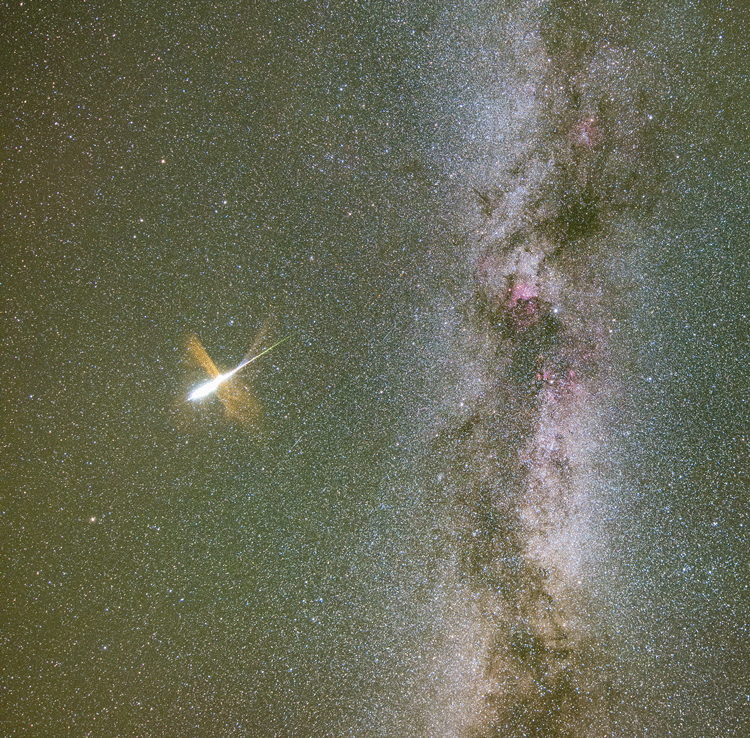Credit & Copyright: AndrI van der Hoeven
Explanation:
Tonight the
Perseid Meteor Shower reaches its maximum.
Grains of icy rock will streak across the sky as they evaporate during entry into
Earth's atmosphere.
These grains were shed from
Comet
Swift-Tuttle.
The Perseids result from the annual crossing of the Earth
through
Comet Swift-Tuttle's orbit, and are
typically the most active
meteor
shower of the year.
Although it is hard to predict the level of activity in any meteor shower, in a clear
dark sky an observer might see a
meteor a minute.
This year's
Perseids occur just
before a
new Moon
and so the relatively dark sky should make even faint meteors visible.
Meteor showers in general are best be seen from a
relaxing position, away from lights.
Featured here
is a meteor caught
exploding two weeks ago
above
Austria
next to the central band of our
Milky
Way Galaxy.
Note:
NASA
TV to Host Perseid Meteor Shower Program
1999 2000 2001 2002 2003 2004 2005 2006 2007 2008 2009 2010 2011 2012 2013 2014 2015 2016 2017 2018 2019 2020 2021 2022 2023 2024 2025 |
Yanvar' Fevral' Mart Aprel' Mai Iyun' Iyul' Avgust Sentyabr' Oktyabr' Noyabr' Dekabr' |
NASA Web Site Statements, Warnings, and Disclaimers
NASA Official: Jay Norris. Specific rights apply.
A service of: LHEA at NASA / GSFC
& Michigan Tech. U.
|
Publikacii s klyuchevymi slovami:
Perseids - Perseidy - Meteor - Meteornyi potok
Publikacii so slovami: Perseids - Perseidy - Meteor - Meteornyi potok | |
Sm. takzhe:
Vse publikacii na tu zhe temu >> | |
